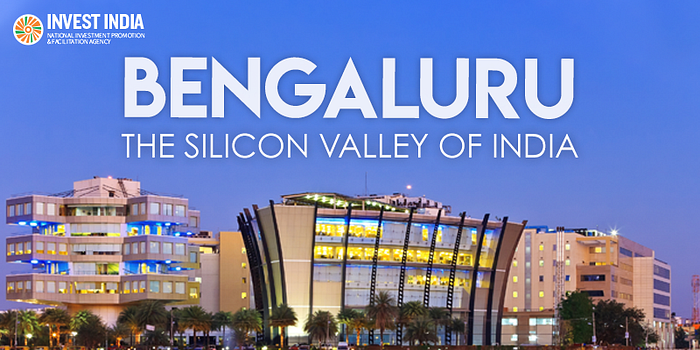How Bangalore Became Asia’s Silicon Valley
These indispensable factors have cemented Bangalore as an IT hub and earned the city the well-deserved sobriquet of Asia’s Silicon Valley.

Introduction:
Nestled amidst the bustling chaos of Bangalore, where maneuvering through traffic can be a daily art form, lies a city that has evolved into Asia’s very own Silicon Valley. With its opulent tech parks, luxurious hotels, and exquisite dining establishments, Bangalore has emerged as a global metropolis of innovation and technological prowess. But how did this transformation come to be? In this article, we embark on a captivating journey through Bangalore’s history, exploring the factors that have shaped it into the vibrant hub of technology and entrepreneurship it is today.
1984: Pioneering the IT Capital:
The seeds of Bangalore’s technological revolution were sown in 1984 with the liberalization of computer and software policies in India. This pivotal moment opened the floodgates for organizations like Wipro and Infosys to establish their headquarters in Bangalore, attracting talented Indian programmers. Moreover, strong ties were forged with American companies, which sought to leverage the country’s vast talent pool and cost advantages. Texas Instruments Inc. set a historic precedent by becoming the first multinational corporation to establish a development center in Bangalore, laying the foundation for future pioneers to follow suit.

2010–2020: A Metamorphosis from Back Office to R&D Hotspot:
The past decade witnessed Bangalore’s remarkable transition from being a mere back-office destination to a thriving research and development (R&D) powerhouse. The city boasts a staggering 35% share of India’s global in-house centers (GIC) and has contributed an estimated $40 billion to the country’s R&D landscape. What sets Bangalore apart is its concentration of high-tech talent, capable of developing custom software solutions at a fraction of the cost. This appeal has attracted Western companies seeking skilled developers without the exorbitant labor expenses prevalent in their home countries.
During this period, India experienced a profound shift in its entrepreneurial landscape. Aspirations shifted from securing jobs at established tech giants to building the next unicorn startup. Bangalore’s population, which currently stands at over 12 million, harbors nearly one million developers. The city is home to more than 100 IT colleges and has become synonymous with startup mania.

Today, Bangalore’s impressive roster of successful startups includes industry disruptors such as Ola, which surpassed its global competitor Uber in the Indian market. E-commerce giant Flipkart, a formidable rival to Amazon, achieved a net market value of $15.5 billion and created a workforce of over 30,000 within a decade. These remarkable success stories trace their origins back to Bangalore, where the entrepreneurial spirit flourishes.

2020: The Ascendancy of Asia’s Silicon Valley:
Bangalore has become the veritable epicenter of India’s IT industry, employing approximately 4.1 million people and contributing nearly $137 billion in annual exports. The city alone generates a staggering 40% of India’s IT export revenue. Global behemoths such as Amazon, IBM, Microsoft, Tesco, Nokia, and Siemens have established their coveted R&D centers in Bangalore, drawn by the city’s impressive technical expertise and versatile labor force.

What sets Bangalore apart from other tech hubs is its holistic ecosystem that fosters innovation and entrepreneurship. The city’s young population comprises digital natives brimming with business acumen and boundless innovation. In this whirlwind of entrepreneurial fervor, technologies like artificial intelligence, machine learning, and the Internet of Things saturate the market, shaping an ecosystem ripe for transformative breakthroughs.
However, the true essence of Bangalore’s ascent cannot be captured by statistics alone. Its multicultural fabric adds an intriguing dimension to the city’s social landscape. With only 49% of Bangalore’s population native to the city, a vibrant amalgamation of cultures converges to create a unique social tapestry. Neighborhoods brim with luxurious boutique shops and extravagant living arrangements, signaling Bangalore’s exponential growth.
Bangalore’s remarkable trajectory has not gone unnoticed. In 2015, it was recognized as the world’s second-fastest-growing IT ecosystem. The World Economic Forum crowned Bangalore the world’s most dynamic city in 2017 and 2019, attesting to its unwavering dynamism and unwavering spirit of innovation.
DID YOU KNOW?
Indian startups have raised close to $50 billion in just the last six years, with more than 40,000 startups launched in the country. With 14 unicorns at a cumulative valuation of $61 billion, Bangalore has been the biggest driver of India’s startup growth story.
Conclusion:
Bangalore’s journey from humble beginnings to Asia’s Silicon Valley is a testament to its resilience, innovation, and entrepreneurial zeal. Through the liberalization of policies, the influx of investments, and the city’s unwavering commitment to technological excellence, Bangalore has etched its name on the global map of technological hubs. Its unique blend of technical expertise, affordable talent, and an ecosystem conducive to disruptive innovation continues to attract multinational corporations and startups alike.
As Bangalore forges ahead as Asia’s Silicon Valley, the city’s potential for growth and revenue remains boundless. The untapped opportunities and burgeoning potential promise decades of prosperity and transformative progress. Bangalore inspires cities worldwide to nurture innovation, embrace technological advancements, and shape their destinies as dynamic hubs of the future.
If you found this blog helpful, please support me on Medium by following and sharing my blogs with your friends and family. You can also donate a small amount to motivate me to write more informative blogs. You can also connect with me on Instagram @bhatiaaman19.
